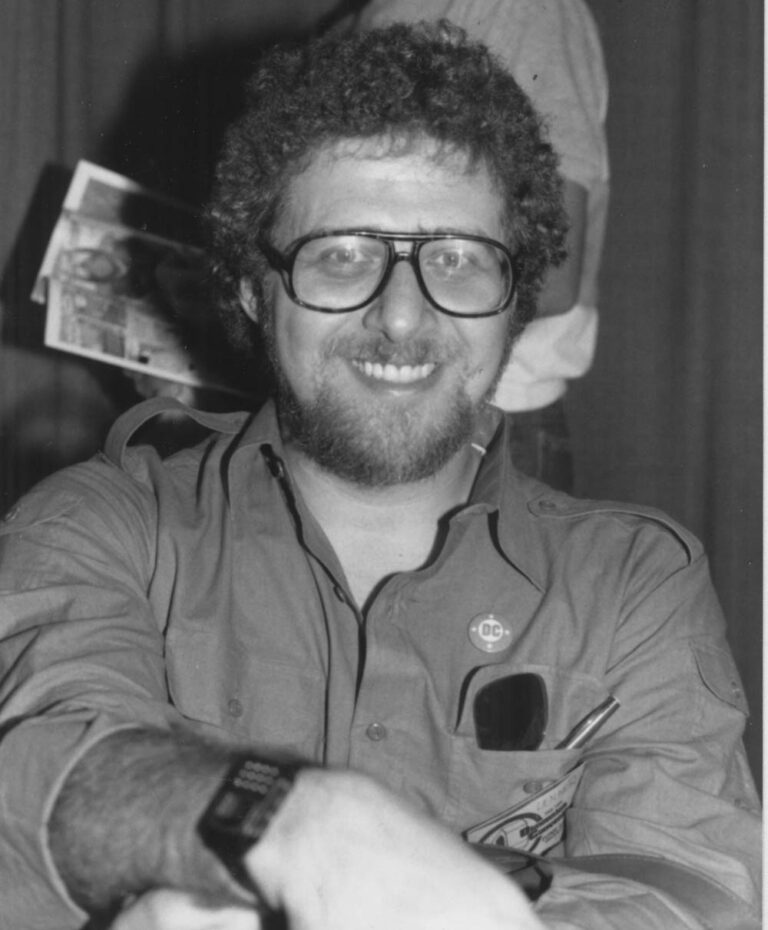Today on the site, Greg Hunter reviews Warmer, the climate change-themed anthology making its debut at this weekend's SPX.
Climate change, when it’s not visible in a sweeping, violent fashion, can be difficult to perceive, more present for some people as a looming abstraction than a felt, measurable thing. This might be why, during the last two decades, few depictions of climate change in the arts have captured the cultural imagination, despite its planet-wide implications. This absence informed the Kickstarter campaign for Warmer. Editors Andrew White and Madeleine Witt told visitors to the campaign page, “We both spend a lot of time thinking about climate change. [...] And we haven't always found art that reflects that.” An anthology of comics about the climate crisis, Warmer at least fills a void within alternative cartooning, exploring personal experience within a global phenomenon.
Warmer is about as cohesive as anthologies get in terms of tone and sensibility. It includes, for instance, multiple past contributors to the Comics Workbook Tumblr, multiple six-panel grid compositions, and multiple works of colored-pencil cartooning (though without full overlap among these categories). Consider it the hazard of a coherent editorial vision—a sense of monotony might set in if a person reads too many pieces in one sitting. A spirit of contemplation characterizes many of the comics, which often feature soft colors and other formal choices that convey quietness, perhaps at the expense of other sensations (e.g. outright panic). Even so, this is a result of Warmer attempting something challenging.
Meanwhile, elsewhere:
—Reviews & Commentary. Emily Gosling writes about Charlotte Salomon.
If all the world really is a stage, the production created for it by Charlotte Salomon is one of the darkest tragedies imaginable; a story of suicide, Nazism, illness, and a poisoned omelette.
Salomon was born in Berlin in 1917, and during the war her Jewish family—like so many others—was persecuted by the Nazis, resulting in her fleeing to France. After war broke out, she was sent to Camp Gurs in the Pyrenees with her grandfather; later allowed to return to Nice due to her grandfather’s age. It was there that the artist, who’d previously been admitted to the Art Academy in Berlin, started making images again.
Felipe "Feggo" Galindo remembers his hero, Rius.
A typical Rius production, Discovering Columbus tells the other side of Columbus’ official history, narrating and illustrating his rapacious conquest of the new lands grabbed from the natives. Rius’ narrative portrays him as the perpetrator and initiator of one of the largest genocides in human history. I had read about Columbus before, but Rius' take took me by surprise. In a concise, humorous and simple manner he opened my mind to new interpretations of history, something similar to what I experienced after I read him for the first time some 45 years ago when I was in middle school, with his comic book series “Los Agachados” (The Stooped Ones, a word used in Mexico to refer to those who don’t assert their rights or don’t “rock the boat.” It also refers to the labor performed by migrant farmworkers.)
The issue of Los Agachados I remember best was a behind-the-scenes take on Coca Cola, Mexico’s favorite drink, and how U.S Empire had used this drink along with many other products as another form of colonialism. It blew my innocent mind back then. I thought, “How can this guy say all those things against such a powerful company and with facts and humor!” It felt like the day when you find out Santa doesn’t exist. After that I became an avid reader of his comics and a fan of his cartoons.
Paul Buhle writes about that other great socialist cartoonist, Art Young.
NEARLY 80 YEARS AGO, one of the sweetest books in the history of American radicalism appeared: Art Young: His Life and Times. A wonderful memoir in every sense, it encompassed and expressed the beloved socialist artist’s saga, from Midwestern small-town boy suspicious of radicals to the greatest of all radical cartoonists in the English language. He hated the spoils of capitalism and war with a ferocity scarcely to be equaled in art anywhere, Picasso or John Heartfield or Spain Rodriguez notwithstanding. But beneath Young’s rage, evident to any reader, could also be found a deep sense of sorrow at the outcome of civilization at large. A popular favorite, his drawing of a caged lion dreaming of free life in the jungle captures the aphorism of philosopher J. J. Rousseau, that “man is born free, but he is everywhere in chains.” Young would have added, indeed did add more than metaphorically in his many drawings over 50 years of work, that the rich and powerful did not seem to suffer so greatly, but nevertheless bore the scars of meretricious lives.
Craig Yoe is NOT MAD.
—Misc. Interested readers can follow along with Lynda Barry's University of Wisconsin comics class online.
The winners of the annual Comics Workbook Composition Competition have been announced.






